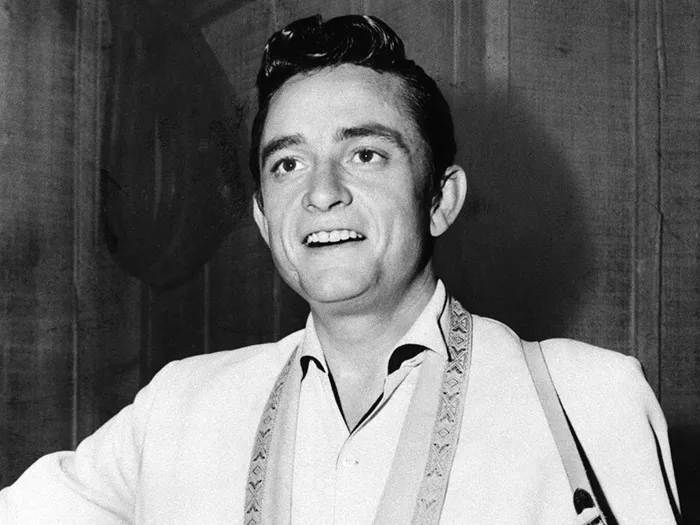Dark country music is a subgenre that blends traditional country sounds with themes of darkness, melancholy, and the macabre. Unlike mainstream country, which often highlights themes of love, heartbreak, and rural life, dark country delves into the shadowy aspects of existence. This article explores the origins, characteristics, notable artists, and cultural impact of dark country music.
I. Origins and Evolution
1. Early Influences
Dark country music has roots in traditional folk and blues. These genres often featured somber themes and storytelling. Early country musicians like Hank Williams sang about heartache and struggle, laying the groundwork for darker themes.
2. The Influence of Gothic Literature and Cinema
Gothic literature and horror films have influenced dark country music. Stories of haunted landscapes, tragic love, and moral ambiguity found their way into the genre. The Southern Gothic tradition, with its eerie settings and flawed characters, significantly shaped dark country music’s narrative style.
3. The Rise of Alt-Country and Americana
In the late 20th century, the alt-country and Americana movements brought a raw, unpolished sound back to country music. Artists in these movements often explored darker themes, distancing themselves from the polished, commercial sound of mainstream country.
II. Characteristics of Dark Country Music
1. Lyrics and Themes
Dark country music often features lyrics about death, loss, and existential angst. Common themes include:
Death and Mortality: Songs explore the inevitability of death and the mysteries of the afterlife.
Love and Betrayal: Tales of doomed romance and heartbreak are frequent.
Crime and Punishment: Stories of outlaws, revenge, and justice populate the genre.
Nature and the Supernatural: Eerie landscapes, ghost stories, and supernatural elements are prevalent.
2. Instrumentation and Sound
The instrumentation in dark country music is similar to traditional country but often includes elements that enhance the dark, moody atmosphere. Common instruments include:
Acoustic and Electric Guitars: Often played with a haunting, reverb-heavy sound.
Banjos and Fiddles: Used to create a rustic, eerie feel.
Harmonica and Dobro: Add a melancholic, bluesy tone.
Percussion: Minimalist and subdued, focusing on creating a brooding rhythm.
3. Vocal Style
Singers in dark country music often use a deep, emotive vocal style. Their delivery conveys the weight of the themes they explore, often with a sense of weariness or foreboding.
III. Notable Artists and Albums
1. Johnny Cash
Johnny Cash, known as “The Man in Black,” is a seminal figure in dark country music. His deep voice and somber lyrics laid the foundation for the genre. Albums like American Recordings showcase his dark storytelling.
2. Nick Cave and the Bad Seeds
While not traditionally a country artist, Nick Cave’s work with the Bad Seeds often intersects with dark country themes. His album Murder Ballads is a prime example, featuring stories of crime and retribution.
3. Gillian Welch
Gillian Welch’s music blends Americana with dark, introspective themes. Her album Time (The Revelator) explores themes of loss, history, and existential doubt.
4. 16 Horsepower
This band is known for their gothic, folk-influenced sound. Albums like Sackcloth ‘n’ Ashes and Low Estate are filled with dark, religious imagery and brooding instrumentation.
IV. Cultural Impact
1. Influence on Other Genres
Dark country music has influenced various genres, including rock, gothic, and folk music. Bands like The Handsome Family and Wovenhand have incorporated dark country elements into their sound, blending it with other musical styles.
2. Film and Television
Dark country music has found its way into film and television soundtracks, enhancing the atmosphere of various projects. Movies like No Country for Old Men and TV shows like True Detective have used dark country songs to underscore their themes and settings.
3. Themed Festivals and Events
The growing popularity of dark country music has led to the creation of themed festivals and events. These gatherings celebrate the genre’s unique blend of music, storytelling, and visual art, attracting fans from diverse backgrounds.
V. Dark Country Music in the Modern Era
1. Contemporary Artists
Several contemporary artists continue to push the boundaries of dark country music. They experiment with new sounds and themes while staying true to the genre’s core elements. Some notable artists include:
Colter Wall: Known for his deep voice and storytelling, Colter Wall’s music often explores historical and existential themes.
The Dead South: This Canadian band blends dark country with bluegrass, creating a unique, energetic sound.
Orville Peck: With his mysterious persona and haunting voice, Orville Peck brings a modern twist to dark country music.
2. The Role of Social Media and Streaming
Social media and streaming platforms have played a significant role in the resurgence of dark country music. Artists can reach global audiences, and fans can discover new music easily. This accessibility has helped dark country music grow in popularity and influence.
VI. The Future of Dark Country Music
The future of dark country music looks promising as artists continue to innovate and explore new themes. The genre’s ability to evolve while maintaining its core elements ensures its continued relevance and appeal.
See Also: The Origin of Bachata: A Musical Journey from the Dominican Republic
VII. Conclusion
Dark country music is a rich, multifaceted genre that delves into the darker aspects of human experience. Its roots in traditional country, combined with influences from gothic literature and Americana, create a unique sound and narrative style. Notable artists like Johnny Cash and Gillian Welch have paved the way for contemporary musicians to explore and expand the genre. As dark country music continues to evolve, it will undoubtedly remain a powerful and evocative form of artistic expression.
Dark country music is not just about the sound; it’s about the stories it tells and the emotions it evokes. It offers a glimpse into the shadowy corners of life, inviting listeners to reflect on their own experiences and the world around them. As the genre grows and adapts, it will continue to captivate and resonate with audiences who appreciate its depth and authenticity.

